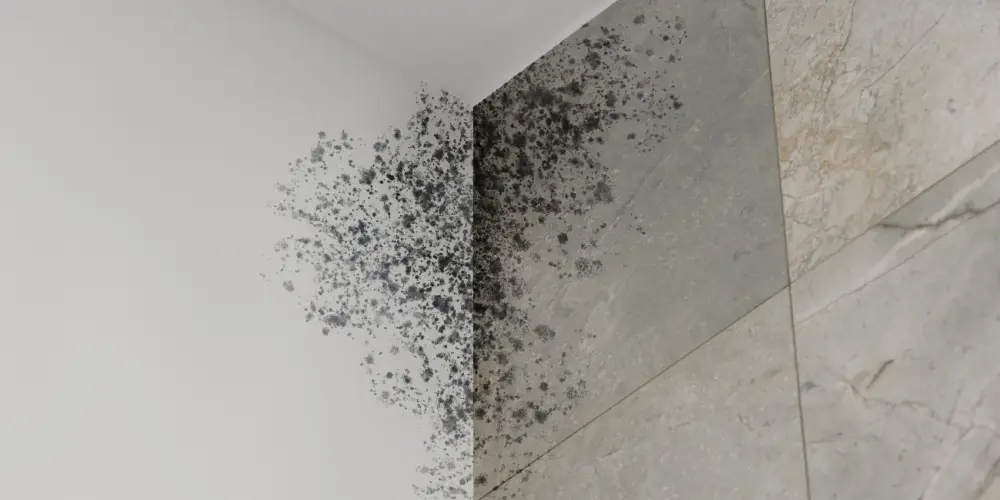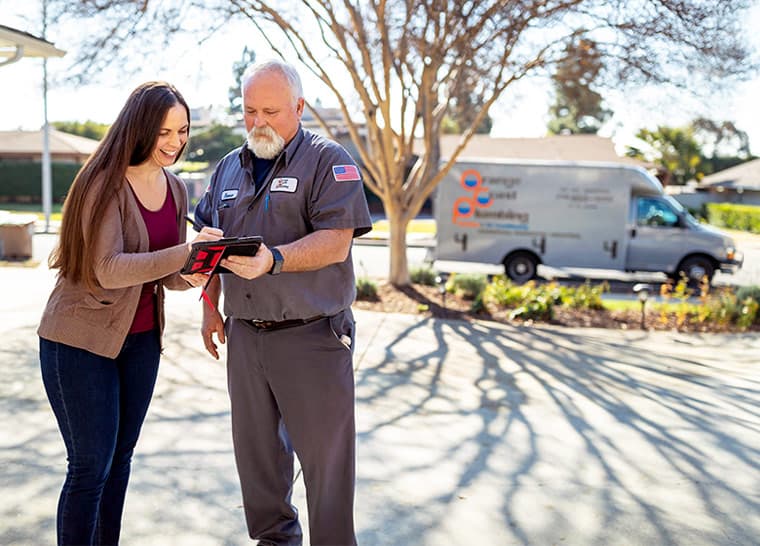Your bathroom, that high-traffic part of the house, may suffer from more than wear and tear. And your family may suffer as a result without even realizing it.
Mold thrives in dank places and, though often visible, can remain hidden in the small cracks between tiles and grout, behind shower curtains, and inside walls. Its spores can trigger allergies and breathing problems in people and pets.
Left unchecked, it ruins aesthetics, undermines your home, and poses a health risk. The best way to deal with it is never letting it gain a foothold.
In this blog, we’ll delve into the characteristics of mold and its potential dangers and provide five foolproof ways to prevent its growth and ensure a healthier bathroom environment.
What Does Mold Look Like?
Bathroom mold can be sneaky — it’s not always the big, black, ominous spots you might envision. It might start as small, almost innocent, dusty, slimy, or fuzzy gray or white patches.
It invades the typically smooth areas around your shower, bathtub, sink, and even your shower curtain. It can work its way into damp corners and walls.
Mold comes in various colors, so watch for green, black, or red hues. It thrives in humid spaces, making the bathroom an ideal breeding ground. Its distinctive stale odor serves as an early indicator of its presence.
Where in Bathrooms Does Mold Grow?
Mold is like that unwanted guest who keeps showing up when you think you’ve seen the last of him.
It lurks beneath surfaces, inside cabinet sinks, ceiling and wall tiles, and behind walls. It loves the moist playgrounds of your shower, tub, and toilet.
Corroded pipes and water leaks in ceilings or floors can also contribute to mold growth. The price of a mold-free home is eternal vigilance.
How Dangerous Is Mold in Bathrooms?
Mold can irritate respiratory conditions like asthma and allergies, causing symptoms like runny nose, sore throat, and coughing.
It’s also dangerous to pets, particularly black mold, which can lead to serious illnesses and even death in dogs.
5 Ways to Prevent Mold in Bathrooms
1. Air Out & Squeegee the Bathroom
Those delightful steamy showers create the perfect environment for mold growth. Turn on the bathroom fan or vent during and after showers to ensure proper ventilation. Invest in a shower squeegee to reduce moisture on walls and shower doors.
2. Use Grout, Repair Leaks, Insulate Walls
Use grout to waterproof and seal areas. Repair any leaks promptly and insulate walls with mold-resistant materials like fiberglass to regulate temperature.
3. Use a Dehumidifier
A dehumidifier can combat excess moisture in your bathroom. Place your dehumidifier strategically to extract moisture from the air and create an inhospitable environment for mold.
4. Launder Bathroom Items
Regularly launder and dry shower mats, curtains, liners, and towels — the most prone to moisture retention. Opt for liquid soap over bar soap to prevent water accumulation, and consider using a soap dish with proper drainage.
5. Finish Off Your Shower with a Shower Spray
Regularly spray your shower with mold-killing bathroom products or a vinegar solution. This routine maintenance will inhibit mold growth, maintaining a clean and healthy bathroom.
Frequently Asked Questions about Bathroom Mold
Q: How can I prevent mold in my bathroom naturally?
A: Natural remedies like hydrogen peroxide, white vinegar, baking soda solutions, and lemon juice can be effective. These alternatives not only prevent mold but leave a refreshing scent.
Q: Why does my bathroom get mold so fast?
A: Bathrooms with high moisture levels are ideal for rapid mold growth. Maintain cleanliness, repair leaks promptly, promote natural ventilation by opening windows and doors, and consider installing a vent fan.
Q: How do you keep mold from growing in the bathroom without a fan?
Enhance natural ventilation by opening windows and doors. Additionally, a dehumidifier inside the bathroom can aid in moisture control, mitigating the risk of mold.
Q: Can painting over mold in the bathroom solve the problem?
A: Oh, if only it were that simple! Painting over mold is like putting a band-aid on a broken bone. It doesn’t fix the root of the problem. Mold will continue to grow beneath the paint, causing further issues. Always clean and remove the mold before painting with mold-resistant paint.
Q: Are there any types of bathroom fixtures more resistant to mold?
A: Materials like stainless steel, porcelain, and certain plastics can fend off mold better than others. Also, consider fixtures with anti-microbial coatings. They’re like the superheroes of the bathroom fixture world, fighting off mold and bacteria at every turn.
Q: How long does it take for mold to start growing in wet conditions?
A: Mold has a need for speed. Under the right conditions, some types can grow in as little as 24-48 hours. So, keep those towels and surfaces dry!
Q: Is it better to wipe or wash surfaces to prevent mold?
A: Both wiping and washing have their place. Wiping down surfaces after a steamy shower can keep moisture levels down, but giving your bathroom a good scrub-down weekly with anti-mold products can stop mold spores before they become a nuisance.
Q: Can essential oils help prevent bathroom mold?
A: Some essential oils like tea tree, clove, and eucalyptus have natural anti-fungal properties. A few drops in your cleaning solutions can work wonders — plus, they’ll make your bathroom smell like a spa.
Q: How often should I check for mold in my bathroom?
A: Make it a regular gig. Check for mold signs every couple of weeks or more frequently if your bathroom is particularly prone to mold. It’s all about staying one step ahead.
Q: Do I need to throw out moldy bathroom items, or can they be cleaned?
A: That depends on the severity of the mold and the material. If we’re talking about shower curtains or bathmats, toss them in the washing machine with vinegar and hot water. But if the mold has taken over like a bad house guest, it might be time to shop for replacements.


